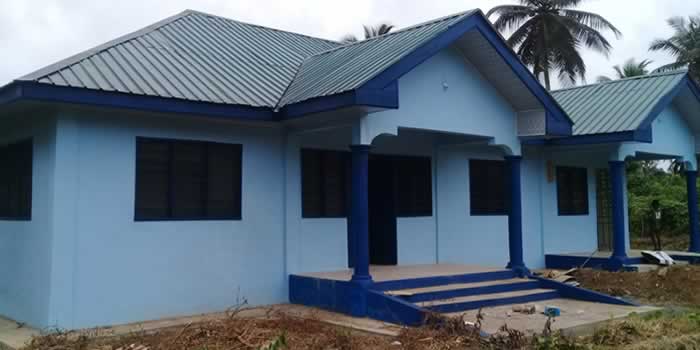

Vulnerable
Vulnerability Analysis is the process of assessing the ability of an individual or group to withstand shocks or manage risks, the probability of becoming poor or poorer. This could come as a result of the following factors-social, environment, economic, or physical.
In the district the influx of fishermen and farmers from other districts to the coastal areas and tropical rainforest of the Jomoro Municipal makes the population in this area vulnerable to social tensions. Another is the civil war or tension in La Cote D’Ivoire which has persisted for the past three years. The unsafe environment serves as a push factor that makes people to migrate to this area to engage in coconut, cocoa cultivation, fishing along the coast and others in transport and private businesses.
The continuous population growth as a result of the migration of other tribes into strategic towns such as Elubo, Jaway Wharf and the fishing areas along the coast to engage in economic activities result in the growth of communities without corresponding growth in the provision of facilities to improve their well-being.
The negative impact is lack of social cohesion and absence of neighborliness. Men contract casual relations with other women thus resulting in unwanted children. The absence of care for such children result in the upsurge of social problems such as Child Labour, Child Trafficking, Streetism, Disability and Child Abuse.
Streetism
Street children, the most visible signs of child labour problems are mostly found in Elubo, Jaway Wharf, Half Assini and Tikobo No. 1 communities. They are mostly engaged in playing cards, stealing of coconuts and other activities.
In Jomoro Municipal, parental irresponsibility is easily identified as the major contributory factor. Many parents only produce children but become unconcerned about making the children grow to become responsible adults. Children of such parents are left on their own without proper care, thereby, exposing them to bad peer influences. Refer to table in pdf file below.
In the last three (3) years vigorous education to families has led to a decreasing trend in reported cases.
Child Labour
The Municipal does not have reliable data on child labour but there are visible indicators that most of the school going children have dropped out of school and are engaged in coconut loading. Communities mostly affected are Tikobo No. 1, Half Assini, Bonyere and a lot of coconut growing areas in the district. A child recently lost his life after falling from a car in which they were loading coconut.
Child Trafficking
The Jomoro Municipal is also involved in issues of Child Trafficking. Many of these children are mostly believed to have been trafficked from the Northern part of the country to especially the border towns of Elubo and Jaway Wharf and usually engaged in manual and domestic activities such as farmlands, street hawking, and ice water selling.
The key element in trafficking is that children are treated as commodities with a buyer, seller and intermediaries. As a result of the exchange of money, buyers of these children tend to reap the maximum benefit out of the children.
The fact that these children are out of school is in itself dangerous for the child, the family and the nation.
Disabled Persons
Another issue of concern to the Jomoro Municipal is the plight of people with various kinds of disabilities. These people with problems related to sight, movement, hearing, speaking, learning, fits and strange behaviour are out of mainstream activities.
Their plight is virtually unnoticed by society until they reach a stage where much cannot be done for them. In 2002-2005, a total of forty (40) cases were registered in the district by the Social Welfare Department. Twenty-five (25) of these reported cases have moving difficulties and are made up of fifteen (15) males and ten (10) females.
Nine (9) people had seeing difficulties – 5 females, 4 males. Six (6) people had hearing difficulties and are mostly males attending school at Inchaban School for the Deaf.
Children In Conflict With The Law
Juvenile Delinquency is also another source of worry to the District. The district recorded only 8 cases during the period. These cases were investigated for the Juvenile Court. Although the figures seem very low compared to the population of children in the district, it should be noted that not all cases were brought to the public domain by the police.
Date Created : 11/20/2017 5:10:58 AM









 facebook
facebook
 twitter
twitter
 Youtube
Youtube
 +233 593 831 280
+233 593 831 280 0800 430 430
0800 430 430 GPS: GE-231-4383
GPS: GE-231-4383 info@ghanadistricts.com
info@ghanadistricts.com Box GP1044, Accra, Ghana
Box GP1044, Accra, Ghana